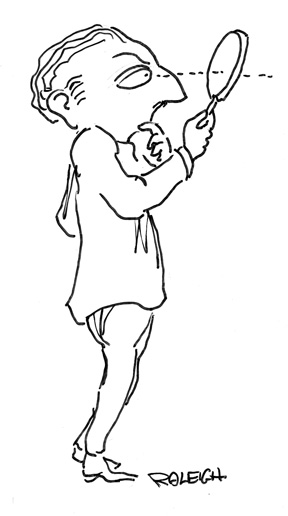Film: Dogs and Murder
By Henry P. Raleigh
ART TIMES March/ April 2011
 |
Perhaps because it was a chilly, rainy day in early May, the sort of day that encourages lethargy that I gave myself over to listlessly roaming cable film offerings. I stopped at “The Kennel Murder Case”, a 1933 whodunit directed by Michael Curtiz. I often fall for the 30’s Hollywood films to wonder at the styles of dress and cars and the era’s standards of ideal male and female form that had existed in the initial days of my own existence on earth. And too, Michael Curtiz is a well-respected figure in the pantheon of American directors.
The Kennel Murder Case is considered one of the best of the dozen or so detective novels created by S.S. Van Dine. Of the many films made from these works, “The Kennel Murder Case” is cited as the best as well. William Powell plays the suave, freelance detective as he had in three other Philo Vance crime mysteries before. This would be Powell’s last role as Philo, a year later he would star as Nick Charles, another urbane crime solver in the long running Thin Man series and accompanied by a wife, Myrna Loy, and a fair amount of martinis. The Scotty dog Philo owns in “The Kennel Murder Case” also contains a career in the series — I ‘m only guessing it’s the same dog.
“The Kennel Murder Case” revolves about two rival dog show competitors and an apparent suicide of one. It is filmed in that soothing black and white look of 30’s films which tend to appear in modulations of gray from dark to light — no dramatic tonal contrasts, no bewildering rapid cutting, all smoothness, one scene melting easily into the next, mid-shots predominating. Perfect viewing for a dreary day, it’s like being read to as you sleepily relax.
The film opens on a dog show on Long Island — town unnamed. As a Long Islander I can tell you those hills and valley belong to some other region of the country but this matters not at all since events quickly move to Manhattan, principally a mansion on 71st street and dog shows, kennels, and Long Island are largely forgotten. The plot has that pulp-fiction innocence that characterizes so many of the 30’s film mysteries and is wonderfully incredulous. In the blink of an eye Philo deduces from a partially removed show from the foot of the corpse that here is not a suicide but a murder and the killer is one of seven suspects (I may have lost count after the seventh.) The gaggle includes the classic Hollywood suspects — a very nervous butler, two ethnic types, one shifty-eyed, the other stone-faced, a clearly untrustworthy woman and Mary Astor. This last is the female lead and while having a large part she is a star none-the-less and too elegant for us to believe she could really be the killer. In this mélange one is reminded of Peter Seller’s Inspector Clouseau” “I suspect no one. I suspect everyone.”
Most of the scenes take place in the 71st street mansion and it is a beehive of bustling people — the seven suspects, a district attorney and his assistants, a gruff voiced homicide chief and his assistants, and a platoon of uniformed policemen and Philo Vance. The homicide chief is played by a character actor, Eugene Palette, who provides a bit of comic relief, excitedly proclaiming his solutions to the crime, of each of which is shot down by Philo. William Powell had always seemed to me an unlikely leading man being of a receding chin, largish nose, and somewhat bulging eyes; still it is his “man-about-town” and dry wit that put him over. Even here in this preposterous murder mystery he offers a cover of classy conviction. Piece by piece Philo assembles from a large assortment of disparate clues a reconstruction of the murder — well, murders for one of the suspects is found stuffed in a closet. There are many clues as there are suspects: a dagger, a fireplace poker, a broken antique vase, a wounded dog, the aforementioned shoe, a darning needle, a fish hook and a length of string. As Philo traces out each step that led t the murders his narration is neatly illustrated by a progression of flashbacks, which, in that temperamental fashion of flashbacks, show only the feet of the killer. This presents a problem for Philo. While it eliminates the two ladies (at least for us, the feet are definitely male) the killer cannot be identified. So in the custom of Hollywood crime mysteries all the suspects still living are gathered together before the maestro as he prepares to spring the trap that will expose the guilty one. I must say I was pretty disappointed at the way this turned out. The director certainly did an admirable job of weaving the tangled threads of the story into a reasonable whole and I suppose there was nothing he could do about the conclusion — it was there in the plot and that was that. You see, the poker clue had been used the killer to bop a Doberman on the head — a deus ex machina if there ever was one. Philo has but to release the recovered Doberman before the suspects and the aggrieved dog will naturally recognize his attacker and rush forward, fangs dripping, to demand an explanation or at least an apology. The real killer, thus unmasked, obligingly grabs the very same poker in defense, realized the jig is up and babbles out a confession. It’s a stretch, all right; still the film does hold you up to this point.
“The Kennel Murder Case” is a charming vintage piece, probably best to be seen on a cold, rainy day.
